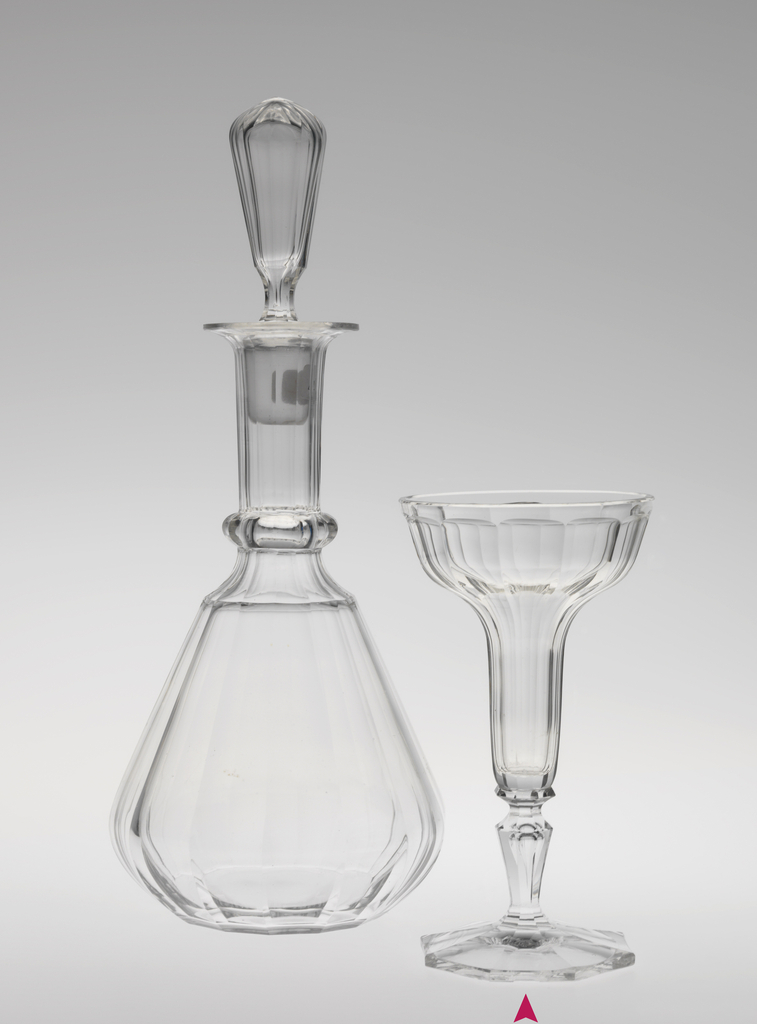Those who drink champagne have varying ideas how bubbly it should be. This glass prompted me to think about how the shape of a glass affects the taste of champagne. Although we tend to associate saucer-style champagne glasses with elegant figures from the 1920s, this shape existed well before then.
The Viennese firm J. & L. Lobmeyr has been an innovative creator of forms, techniques, and style in glassware throughout its 190 year history. Since its inception, Lobmeyr has shown surprising versatility in its use of shapes for champagne glasses, often producing a variety of patterns at the same time. This means that personal taste could dictate what shape of champagne glass to choose, rather than one shape being available any given time. Cooper-Hewitt has a collection of over 170 pieces of Lobmeyr glass from between 1835 and 2011. Of these, there are seven different champagne glasses, one tulip-shaped and six flutes, one of which is part of a service that also has saucer-shaped examples. While flutes were initially common—the earliest champagne glass in the Lobmeyr collection is a flute produced around 1835—once the saucer or cup came into fashion it dominated until the flute re-asserted itself to meet the demand for bubblier champagne. The earliest Lobmeyr cup-form example in the Museum's collection dates to 1865. While this glass today looks more like an ice cream parfait glass, it still allowed the bubbles to rise in a narrow stem, like the flute. Its new element, however, is that it finishes in a deep saucer-like shape which releases more bubbles, becoming an early manifestation of the trend towards saucers.
A typical bottle of champagne has seven times its volume in room-pressure carbon dioxide. When uncorked, the gas formed from repeated fermentation begins to release. Makers strive for small bubbles that burst when they reach the surface to create a buzzing sensation on the lips. These bubbles dissipate in the flatter coupe—or saucer-shaped glass—preferable for someone who wants fewer bubbles.
